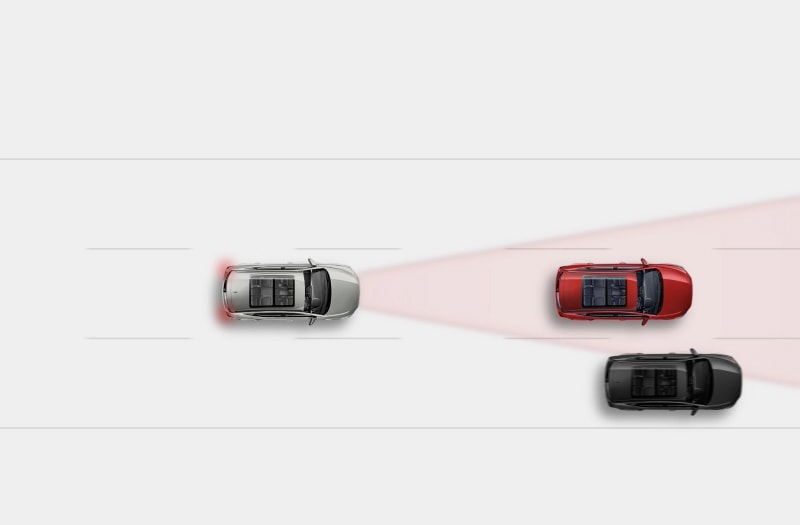MG Pilot's Safety Features

At MG we believe that your safety and comfort is paramount. That’s why our cars are fitted with innovative safety features known as MG Pilot. This guide will explain what MG Pilot is and how it works so that you can utilise some of these technologies next time you’re behind the wheel.
What is MG Pilot?
MG Pilot is our suite of clever assistance technologies. Every one of our models is fitted with an extensive range of advanced driver assistance systems (ADAS) to make your driving experience as smooth and simple as possible. This includes everything from alerting you to potential hazards, to monitoring speed, to make the roads safer for you and other drivers.
What are the safety features within MG Pilot?
MG Pilot is made up of 10 safety features all designed to keep you protected. It’s a combination of semi-autonomous driving and safety systems to make driving as easy as possible. These features include:
1. Adaptive Cruise Control
Adaptive Cruise Control uses smart technology to detect what’s in front of you. It will then change your speed depending on the current situation. For example, if the roads are clear then you are set on a steady course, but if a car in front begins to slow down, then it will use the brakes to gently reduce speed. This helps to prevent any collisions.
2. Intelligent High Beam Control
Taking your hands off the steering wheel to adapt your headlights can be a hazard. That’s why we’ve automated them. During auto position, the high beam automatically switches to low beam when it detects a car ahead. This prevents blinding the driver with a bright light, which is especially dangerous at night.
3. Active Emergency Braking with Pedestrian and Bicycle Detection
The idea of Active Emergency Braking (AEB) is that smart technology can react faster than humans. At speeds above 20km/h, automatic braking will reduce the severity of any accident, whilst below 20km/h will avoid the collision altogether.
4. Traffic Jam Assist
With our Traffic Jam Assist technology your vehicle can come to a stop and then accelerate again by itself when it detects a traffic jam. It does this by monitoring the car in front and automatically following its pattern.
5. Lane Departure Warning System (LDWS)
Using a camera, the vehicle can see the road markings ahead and detect when a driver may be departing from them. It sends a visual, audible and physical signal to correct their position and get the car back on track.
6. Lane Keep Assist (LKA)
Lane Keep Assist (LKA) goes one step further than the Lane Departure Warning and actually corrects the driver’s position for them. By taking control of the wheel it adjusts the vehicle’s position to keep it within the lane markings.
7. Blind Spot Detection (BSD)
Blind spots are dangerous for any driver because the hazards are not perceivable to the human eye. That’s where blind spot detection (BSD) comes in. It detects vehicles approaching the blind spots at the left and right rear of the vehicle and alerts the driver through a visible signal.
8. Lane Change Assist (LCA)
Changing lanes always requires concentration to ensure you have enough space to gently manoeuvre your vehicle. However blind spots can prevent the driver from having a clear idea of when it is safe to move. The Lane Change Assist (LCA) provides an additional, visible signal alongside the Blind Spot Monitoring to alert the driver to a potential hazard.
9. Rear Cross Traffic Alert (RCTA)
Everyone can agree that parking is a nightmare, but Rear Cross Traffic Alert (RCTA) makes it a little easier. It alerts the driver to any vehicle approaching them from either side when reversing so that they know when to reverse safely to prevent any collisions.
10. Intelligent Speed Limit Assist
One road can have different speed signs depending on the environment, for example if you are approaching a roundabout or driving past a school. It is imperative to take note of these speed signs and adjust your speed accordingly. The Intelligent Speed Limit Assist does the hard work for you by registering the speed signs using a camera and alerting the driver to break or accelerate.
There we have it - our simple guide to MG Pilot. Now that you know more about these innovative safety features and how they can make your driving experience as smooth and comfortable as possible, it's time to use them more often. Driving has never been so easy.
